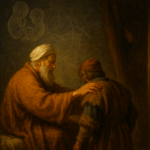
Isaac and Rebecca: Deception or Wigner’s Friend Paradox?
Synopsis The narrative of the “stolen blessings” in Parashat Toldot presents a profound moral paradox: How could Rebecca, a righteous prophetess, and Jacob, the archetype

Synopsis The narrative of the “stolen blessings” in Parashat Toldot presents a profound moral paradox: How could Rebecca, a righteous prophetess, and Jacob, the archetype
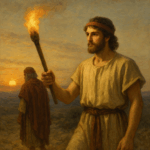
Chayei Sarah and the Physics of Makifim and Pnimim Synopsis This essay reveals a profound numerical convergence between Torah and quantum physics through the number
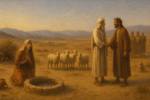
Summary This essay examines two consecutive narratives from Parshat Vayeira, each featuring a well and each posing a distinct epistemological challenge. Hagar’s well (Genesis 21:19)
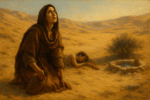
(Parshat Vayeira, Genesis 21:14-21) Hagar and Ishmael are dying of thirst in the desert. In her despair, Hagar places her son under a bush and
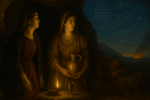
There is not a Shabbos in which we do not read the parasha of Lot (Bereshis Rabbah 51:9) The Kabbalistic Dimension: Hidden Unities and Dimensional

And Sarah laughed within herself, saying, “After I have become worn out, will I have ednah [renewal]?” (Genesis 18:12) Sarah’s laugh is more than skepticism—it
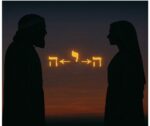
When G‑d promises great wealth to Abram, after Abram refuses the spoils of war offered by the King of Sodom, Abram retorts: What can You
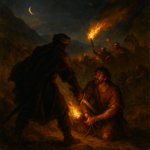
When Abram heard that his kinsman had been taken captive, he mustered his trained men… and went in pursuit. (Genesis 14:14) Abraham just separated from

Everyone marvels at the beauty of a rainbow—its perfect arc, its radiant colors. Yet, in truth, the rainbow doesn’t exist out there. The spectrum of
By Alexander Poltorak Introduction The relationship between the laws of physics and the conditions necessary for life is among the most profound mysteries in both
By Alexander Poltorak The Tree of Life and the Tree of Knowledge as Metaphors for the Wave Function and Measurement Summary This essay proposes a
By Alexander Poltorak I. Introduction The confrontation between Jacob and an unidentified being in Genesis raises fundamental questions about the nature of consciousness, identity, and
This post continues the discussion we began in “Bereshit: The Binary Universe I” and continued in “The Binary Universe II: Angels as Microprocessors” and “Binary
This post continues the discussion we began in “Bereshit: The Binary Universe I” and continued in “The Binary Universe II: Angels as Microprocessors.” At the

The parallels we have uncovered between the four elements, the letters of the Tetragrammaton, and the worlds of Seder Hishtalshelut suggest that the ancient sages
And G-d said to Abram, “Go forth from your native land and from your father’s house to the land that I will show you.” (Genesis
And it came to pass, when he was come near to enter into Egypt, that he said unto Sarai his wife: “Behold now, I know
Abstract This essay explores the profound significance of the letter Bet (ב), the first letter of the Torah, and its numerical value of two as

This essay explores a novel parallel between quantum mechanical principles and the biblical creation narrative through etymological analysis of the Hebrew terms “erev” (evening) and
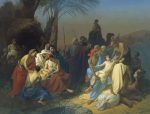
The story of Joseph and his brothers, described in the Torah portion of Vayeshev, presents many problems. Classical biblical commentators interpret the conflict between Joseph
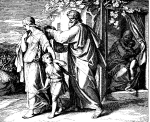
Like most Jewish families worldwide, last Shabbat, the conversation revolved around the situation in the Middle East and the war in Gaza. The question was,
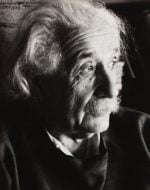
Einstein’s Special Theory of Relativity (STR) is broadly misunderstood by the public. In most popular science books, relativity theory is hailed for introducing relativity to
Structurally identical biblical accounts of creation, destruction, and restoration are viewed as a manifestation of dialectic triad thesis-antithesis-synthesis.
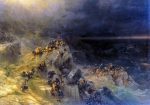
Noah’s flood was a cataclysmic event with no parallels in recorded history. All of humanity (along with flora and fauna)—except for Noah and his family
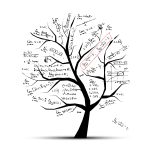
To Mendel Almost three years ago, in December of 2019, I posted an essay, “The Tree of Knowledge as a Metaphor for Superposition of States
In the six hundredth year of Noah’s life, in the second month, on the seventeenth day of the month, on the same day were all

And G‑d created man in His own image, in the image of G‑d created He him; male and female created He them. And G‑d blessed

Now the earth was unformed and void. Genesis 1:2 We have a big problem in cosmology: the problem of the initial conditions of the universe at
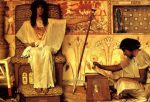
And afterwards she bore a daughter, and called her name Dinah. (Genesis 30:21) In my previous essay, “The Conflict Between Joseph And His Brothers—A Gender
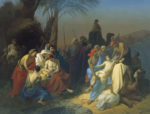
The confrontation between Joseph and his brothers is one of the most troubling stories of the Bible. Joseph and his brother—twelve sons of Jacob—were the
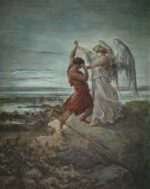
So the present passed over before him; and he himself lodged that night in the camp. And he rose up that night, and took his
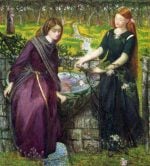
Now Laban had two daughters: the name of the elder was Leah, and the name of the younger was Rachel. (Genesis 29:16) Rabbi Isaiah Horowitz (the
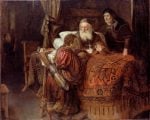
And Rebekah spoke unto Jacob, her son, saying: “Behold, I heard thy father speak unto Esau thy brother, saying: Bring me venison, and make me

And Abraham took another wife, and her name was Keturah. (Genesis 25:1) Keturah: This is Hagar. She was called Keturah because her deeds were as

And Abraham took another wife, and her name was Keturah (Genesis 25:1) As I discussed in the earlier essay, “Yom Kippur – Disentangling the
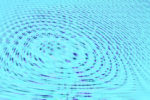
This is My covenant, which ye shall keep, between Me and you and thy seed after thee: every male among you shall be circumcised. And

Michael Frayn’s 1998 play, Copenhagen, concerns a meeting between two great physicists, Niels Bohr and Werner Heisenberg, in 1941 in Copenhagen. In this play, the
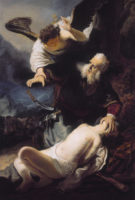
And He said: “Take now thy son, thine only son, whom thou lovest, even Isaac, and get thee into the land of Moriah; and offer

A light shalt thou make to the ark…with lower, second, and third stories shalt thou make it. (Genesis 6:16) We mentioned in the previous posts

A light shalt thou make to the ark, and to a cubit shalt thou finish it upward; and the door of the ark shalt thou

Make thee an ark of gopher wood; with rooms shalt thou make the ark, and shalt pitch it within and without with pitch” (Genesis 6:14)

And G‑d said: “Let there be light.” And there was light. And G‑d saw the light, that it was good; and G‑d separated between the
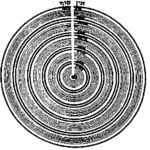
In the previous post “Physics of Tzimtzum I—The Quantum Leap”, we gave a general overview of the mystical doctrine of tzimtzum—the cornerstone of Lurianic Kabbalah.

Introduction “In the beginning G‑d created the heavens and the earth.” (Genesis 1:1) “In the beginning G‑d created the heavens and the earth,” the Torah

In the beginning G‑d created the heaven and the earth. (Genesis 1:1) The first verse in the Torah is key to understanding the fundamentals
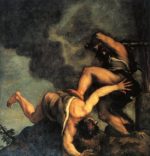
…And Abel was a keeper of sheep, but Cain was a tiller of the ground. And in process of time it came to pass, that Cain

Now the Serpent was more cunning than any beast of the field which the Eternal G‑d had made. (Genesis 3:1) When G‑d placed Adam

And the Eternal G‑d said: “It is not good that the man should be alone; I will make him a helpmate opposite him.” (Genesis 2:18)

As we discussed in the previous post “Singularity and Paradise,” Paradise offers a beautiful metaphor for modern cosmology wherein Eden is the initial singularity preceding

These are the chronicles of the heaven and of the earth when they were created, in the day that the Eternal G‑d made earth and

As we discussed in the earlier post, The Tree of Knowledge as a Metaphor for Superposition of States and Heisenberg’s Uncertainty Principle, the Heisenberg uncertainty
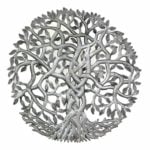
As always in science, every answered question breeds new questions. Now that we understand that the Tree of Life and the Tree of Knowledge are

And out of the ground made the Lord G‑d to grow every tree that is pleasant to the sight, and good for food; and the
And the messengers returned to Jacob, saying: “We came to thy brother Esau, and moreover he cometh to meet thee, and four hundred men with

And the Lord appeared unto him in the plains of Mamre, as he sat in the entrance of the tent in the heat of the
And Abraham drew near, and said: ‘Wilt Thou indeed sweep away the righteous with the wicked? Perhaps there are fifty righteous within the city; wilt
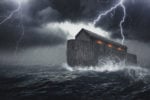
Time is a storm in which we are all lost. ” (William Carlos Williams, Introduction to “Selected Essays”) I always had a hard time relating
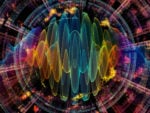
Strings vibrate, Souls tremble, Angels are running and returning, G‑d is touching and not touching – The rhythms of the universe… Nothing stays still… all

At the end of the first chapter of the Torah, Genesis (Bereshit), G‑d regrets, as it were, creating humanity that became depraved: And the Lord

And the messengers returned to Jacob, saying: “We came to thy brother Esau, and moreover he cometh to meet thee, and four hundred men with
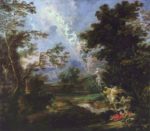
November 19, 2018 And he [Jacob] dreamed, and behold! a ladder set up on the ground and its top reached to heaven; and behold, angels
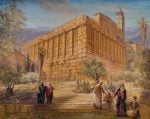
And he [Avraham] spoke with them, saying, “…Listen to me and entreat for me to Ephron the son of Zohar. That he may give me
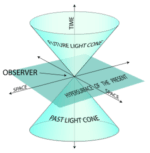
And the life of Sarah was one hundred years and twenty years and seven years… (Gen. 23:1) Why did Esther merit to rule over 127
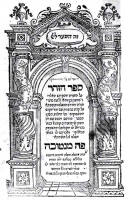
In the six hundredth year of Noah’s life, in the second month, on the seventeenth day of the month… all the fountains of the great
The previous Lubavitcher Rebbe, the Rebbe Rayatz (a.k.a. the Fridriker Rebbe) told the story about his father, the Rebbe Rashab. Once the brother of Rebbe
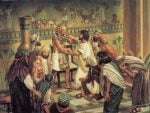
In the Torah portion Miketz, Pharaoh has two dreams. He wakes up agitated and calls on all the wise men of Egypt to interpret his
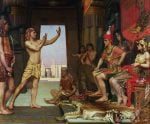
The story of Joseph’s incarceration ends with his successful interpretation of the dreams of the Pharaoh’s chief butler and the chief baker. He ingeniously interpreted ordinary
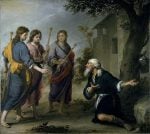
And he [Abraham] lifted up his eyes and looked, and, lo, three men stood over against him… (Genesis 18:2) On this blog, we often discuss
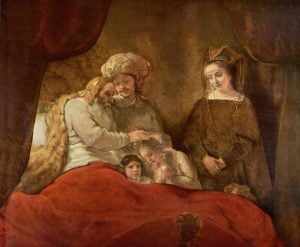
And now thy two sons, who were born unto thee in the land of Egypt before I came unto thee into Egypt, are mine; Ephraim
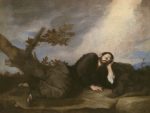
And he arrived upon the place and lodged there all night, because the sun was set; and he took from the stones of the place,
And these are the years of the life of Ishmael: one hundred years and thirty years and seven years (Gen. 25,17) You might say the
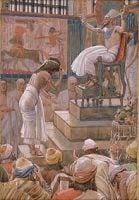
This week, we read in the Torah portion Vayigash (Gen. 44:18–47:27) about Joseph revealing himself to his brothers and Jacob coming to Egypt with his family. This
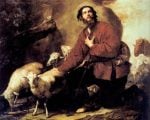
Synopsis This essay reads Jacob’s agreement with Laban over the streaked, speckled, and spotted sheep as far more than an odd detail in an ancient
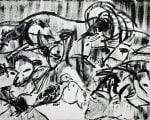
And he took him all these, and divided them in the midst, and laid each half over against the other… And it came to pass, that,
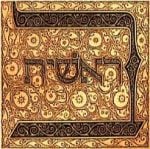
Dedicated to the memory of Professor Yaakob David Bekenstein The Torah opens with the word “Bereshit” – in the Beginning – whose first letter, Bet,
In this Torah portion, Vayechi, Jacob, gathers his children to reveal to them “Ketz HaYamim”–“the End of Days.” Rashi explains that Jacob’s intention was to

I grew up in Russia and was raised on the metric system based on decimal arithmetic. When we immigrated to the U.S., I had to

In the Torah portion Vayeishev (Gen. 37:1–40:23), we read about Joseph interpreting dreams of the Pharaoh’s chief butler and the chief baker: And the chief butler told

The story of entangled twins is continuing in the Torah portion Vayeitzei (Genesis 28:10–32:3.) Structurally, it is very similar to the story in the previous Torah
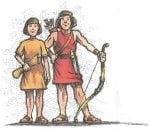
Entanglement is often called the most baffling and quintessential phenomenon in quantum mechanics. What is entanglement, in a nutshell? Two particles born from one reaction

Give me the Machpelah (double) Cave Genesis 23:9 The first legal acquisition of land in Israel takes place in this Torah portion, Chayei Sarah, when Abraham

And he dreamed, and behold! a ladder set up on the ground and its top reached to heaven; and behold, angels of G‑d were ascending
B’reshit bara Elokim et hashamaim v’et haaretz… In the beginning, G‑d created heaven and earth… Alternative translation: With two beginnings G‑d created heaven and earth…